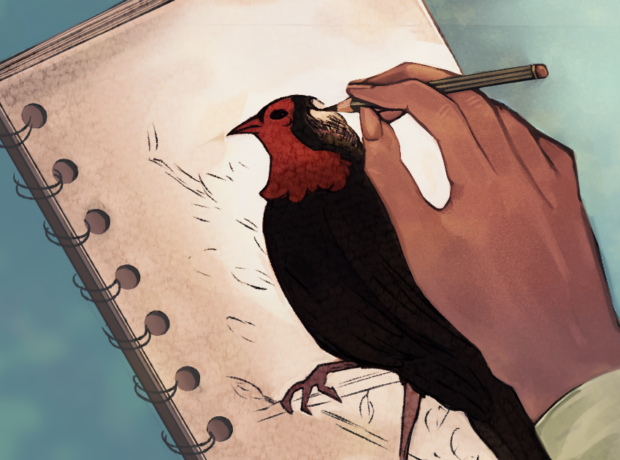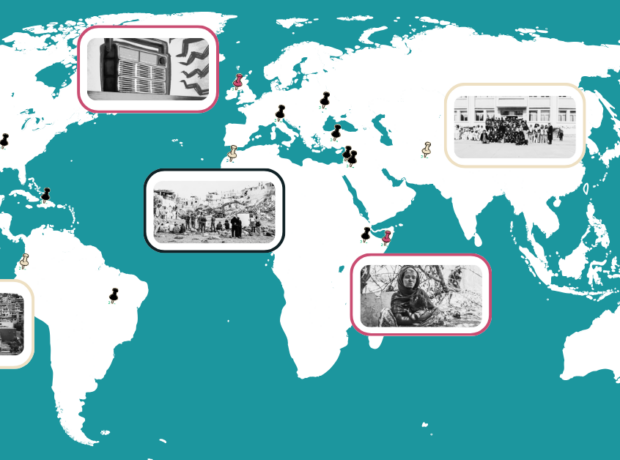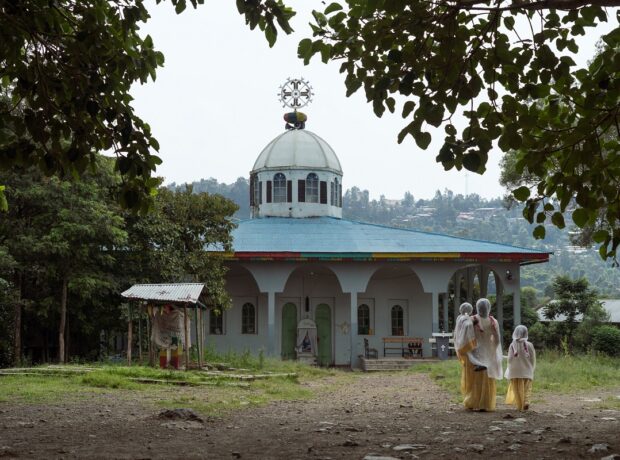Contemporary African artists and creatives are using fashion, painting, photography and film to highlight the climate crisis. As the continent faces severe water shortages, artists are turning their work into activism.
As far back as 1975, Nigerian artist Fela Kuti was singing about the right to water. The afrobeat pioneer used his song ‘Water no get enemy’ to shed light on how politics can restrict even the most basic human rights such as access to water and sanitation.
A Yoruba proverb about the power of water is referenced in the lyrics of the song.
T’o ba fe l’o we omi l’o mal’o, if you wan to go wash, na water you go use; T’o ba fe se’be, omi l’o ma l’o, if you wan cook soup, na water you go use; T’o ri ba n’gbona, omi l’ero re, if your head dey hurt, na water go cool am”
Translated these lyrics mean that if you want to have your bath or prepare soup, water is what you will use. When your head hurts, water is the relief.
Nearly 50 years later, communities are still fighting for adequate water and basic sanitation. Water scarcity is affecting one in three Africans and 400 million people in sub-Saharan Africa do not have access to adequate drinking water. According to the United Nations agency UN-Water, Africa has only three years to avoid a water crisis catastrophe. And the last decade has seen a wave of artists across the African continent tackling the issue.
In these times, more and more politically-minded artists, including poet Ben Okri and writer Keith Mudangepfupfu, are questioning whether it’s acceptable to make art just for art’s sake. Here, we feature nine African artists using their work to campaign for change.
Aïda Muluneh’s – Water Life
Photographer, Ethiopia
Award-winning photographer and artist Aida Muluneh chose the Afar region of northern Ethiopia, one of the world’s driest and hottest areas, as the location for a photoshoot about water. Water Life’s creative features include brilliant blues, reds, painted wood, dark skin, and white-striped flooring. Muluneh’s art not only focuses on the issue of water scarcity, but also on the burden that water scarcity places on women.

Fragments by Aïda Muluneh at The Museum of Modern Art depicts Muluneh’s female subjects stand against bold, graphic backdrops as they conjure daily life and performances of gender and identity in the photographer’s home city, Addis Ababa – by Andrew Milligan sumo
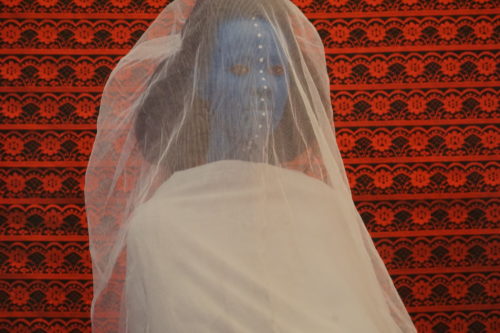
The Morning Bride by Aïda Muluneh in The Museum of Modern Art reflects on the daily lives of women in the rural regions of Africa who often take on the responsibility of managing water resources. Muluneh’s use of colourful make-up is inspired by body art from across Africa – by Andrew Milligan sumo
Charity WaterAid commissioned Muluneh to create a series of 12 works in 2018. “The collection of photographs is basically a depiction of the numerous challenges faced by women as it relates to the conveyance of water,” Muluneh said.
Often, women are forced to travel vast distances in hazardous conditions to source water. Over 200 hours a year are spent by girls and women walking for water – time that could have been used for education or self-determination. Images like this show the impact of water availability on the lives of women in Africa.
Aissa Maiga – Marcher sur L’eau (Above Water)
Filmmaker, Senegal
Born in Senegal, Aissa Maiga’s lead role in ‘The Boy Who Harnessed the Wind,’ a 2019 film that deals with drought in Malawi, cemented her as not only an actor but an activist. Maiga’s 2021 film, Above Water (Marcher Sur L’eau), depicts the effects of global warming, drought, and population displacement in a human context. She said:
“I want to tell the story of a family where everything is going well, but turned upside down by global warming and the lack of water.”
The story is set in Tatis, a village in Niger, where a 12-year-old girl is seen travelling for hours each day to collect water before she uncovers an underground spring that could change the village’s destiny. As water becomes scarcer, the film shows how it affects everything from peace to migration, governance to education, health and survival. Above Water was screened last year at Cannes.
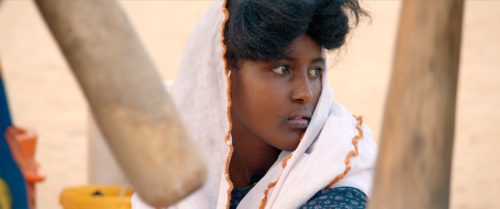
Image from Marcher Sur L’eau (Above Water) – by Festival de Cine Africano Tarifa Tánge
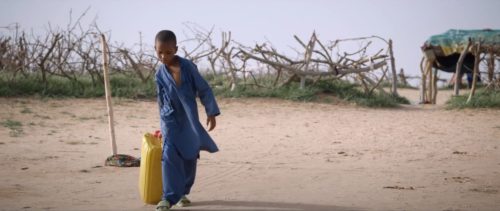
Above Water (Marcher sur l’Eau) official trailer from Cannes Film Festival 2021

Above Water (Marcher sur l’Eau) official trailer from Cannes Film Festival 2021
Theopencil, Kwabena Nature, Enam Bosokah, Jeffery Appiatu – water portraits
Visual Artists, Ghana
Four contemporary Ghanaian artists – Theopencil, Kwabena Nature, Enam Bosokah, and Jeffery Appiatu – have all created striking works that tempt the viewer to reach out and touch the artistic representation of water. Using paint, pencil, charcoal and ballpoint pen, the artists show their subjects dripping, splashing and soaking in water, giving the water an almost photographic rendering.
View this post on Instagram
Baz-Art –Walls 4 Water
Visual artists, South Africa
The Cape Town-based Baz-Art initiative uses urban art to engage the public. Their ‘Walls 4 Water’ project was designed to address South Africa’s high levels of inequality and unequal access to water. This body of work, created last year, was featured in the fifth edition of the International Public Art Festival. The Eastern Cape, known for its water crisis, has three murals painted by seven different visual artists. The artists were commissioned by charity Viva con Agua which runs water, sanitation and hygiene (WASH) programmes in local communities. Each mural took the theme ‘WASHEROES’, using superhero designs as a learning tool for local schoolchildren.
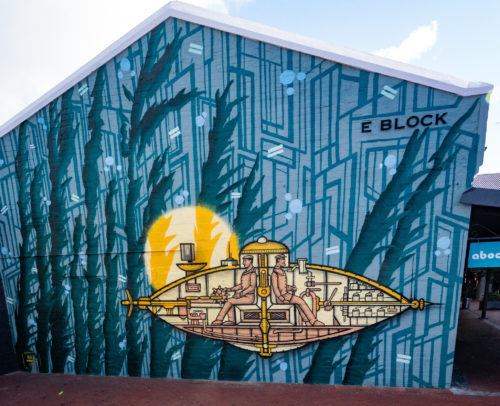
Another example of Baz-Art’s contemporary murals in Cape Town, South Africa – by Jay Galvin
Adama Ndiaye – Founder of Dakar fashion week
Fashion designer, Senegal
There was no runway in Dakar Fashion Week. Instead, models walked the soil beneath old baobab trees as their catwalk. Featured by BBC News, the Fashion Week has in recent years taken themes of sustainability and environmental responsibility. Twenty designers participated in the 2021 show, and fast fashion, which has been accused of wreaking havoc on the environment, was eliminated thanks to the use of locally handmade garments.
Worldwide, the fashion sector uses a lot of water. The dyeing and treatment of textiles is estimated to account for 20% of global industrial water pollution. Since the fashion sector currently consumes over 93 billion cubic metres of water per year, it accounts for about 4% of all freshwater extraction worldwide. “Many designers have already become accustomed to designing locally produced apparel that is not made in large quantities,” said Adama Ndiye, the Dakar Fashion Week creator and designer behind Adama Paris.
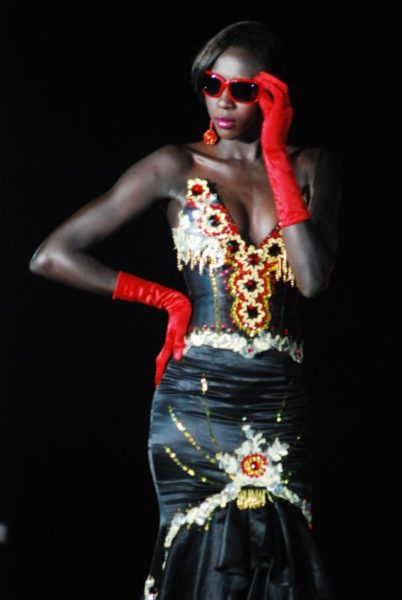
Dakar Fashion week in 2010 – by Seneweb
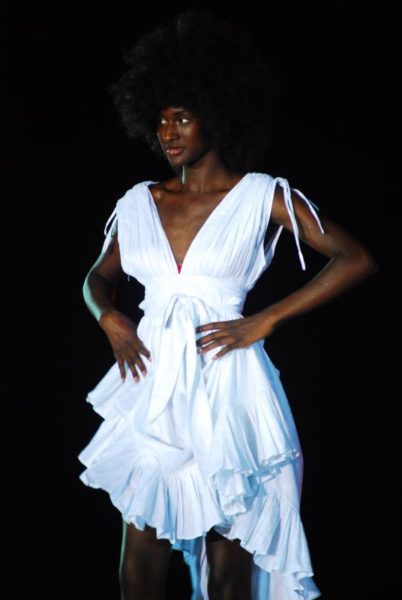
Dakar Fashion week in 2010 – by Seneweb
Porky Hefer – Plastocene – Marine mutants from a disposable world
Contemporary art designer, South Africa
Let’s say the end of the world has come in the distant future. All marine species have become mutants due to ocean pollution and as a result of climate change. This is the world brought to life by the South African designer, Porky Hefer. He calls it Plastocene. A new life form has evolved from waste including cigarette butts, cotton buds, coffee cups, and fishing nets. As a result of environmental negligence, sea-born plastic garbage, these organisms have changed in form. According to Hefer, people may not make it through the calamities caused by climate change. The oceans will suffer greatly as a result of global warming. Coral bleaching, fish migration, drowning wetlands, ocean acidification, warming, and increasing sea levels are all being exacerbated by climate change. If we don’t take action now, we can expect global repercussions.
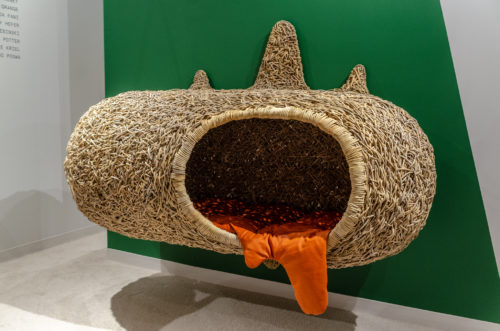
Porky Hefer – Mud Dauber Sleeping Pod – by Dave Pinter
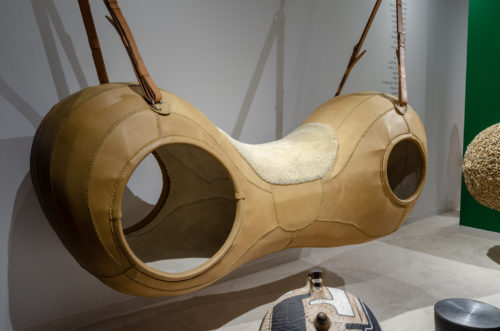
Porky Hefer – James Brown – by Dave Pinter
Gina Tarboton and Loren Dyer – GiLo Lifestyle
Ethical and sustainable fashion designers, South Africa
In one world, what one person may think of as “junk” may be considered “precious” by another. However, In this case, a South African brand is showing that someone’s trash is someone else’s trousers. GiLo lifestyle, a sustainable and ethical fashion business, has created men’s shorts from plastic bottles washed up on beaches all around the world. In countries such as India, Pakistan, China, and Malaysia, the bottles are sourced from plastic garbage dumps. Gina Tarboton and Loren Dyer, two women who share a passion for fashion and the environment, launched the fashion business. Their goal is to provide high-quality, ethical apparel in the hopes of influencing the fashion ideas of the general public. South Africa’s beaches and seas are littered with plastic and other debris, and this #fashionwithaconscience movement attempts to tackle the issue head-on.

Tennis skort made from 92% recycled plastic bottles and 8% spandex – GiLo Lifestyle
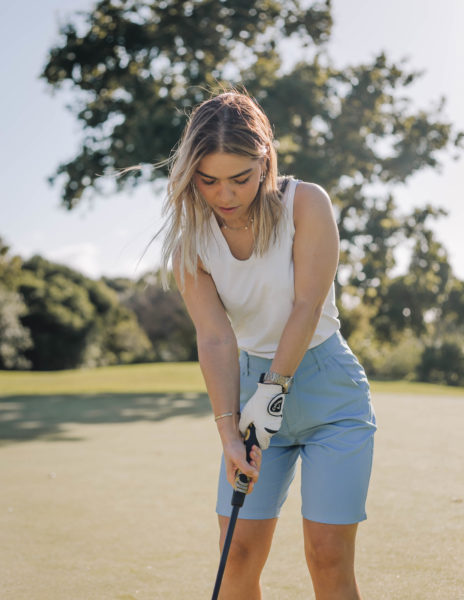
Golf shorts made from 92% recycled plastic bottles and 8% spandex – GiLo Lifestyle
Yes Rasta! – Sons of October
Reggae band, Zambia
While the town of Livingston, Zambia, sits on the edge of the magnificent Victoria Falls, it could also be on the verge of extensive deforestation and desertification. Reggae music from Zambia is making a strong statement about the problem. The band Yes Rasta! highlight climate change and its effect on water scarcity in their 2018 song “Sons of October.” In Zambia, October is the hottest and driest month of the year, making water a precious commodity. The song encourages planting trees, pruning stumps for forest regeneration, repurposing deadwood and branches, and more. Community members, lawmakers, and members of the public are all urged to do take action in combating climate change.
Fiona Ewan Rowett – Slow the Flow
Painter, South Africa
An eco-exhibition called Slow the Flow, focusing on water scarcity in South Africa’s Western Cape province, was launched after after Cape Town was devastated by one of history’s biggest water crises between 2017 and 2018. Using acrylic paints, Fiona Ewan Rowett created abstract depictions of water, with a variety of blues spliced together to create a striking contrast. Astrid McLeod, curator of The Gallery in the town of Riebeek Kasteel where the exhibition was hosted, believed Rowett’s paintings would inspire visitors to re-evaluate their own habits.
Read more:
- The power of art and music in Ethiopia’s refugee camps
- Outstanding human rights journalism from the Amnesty Media Awards 2022
- Power in unity: lanaire aderemi’s play celebrates defiant Nigerian women
Main Image shows Sai Mado by the Distant Gaze by Aida Muluneh – Amaury Laporte

